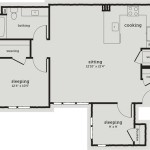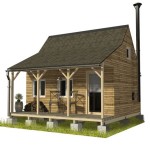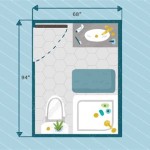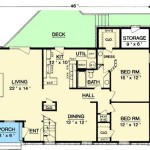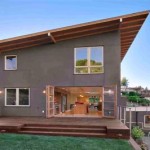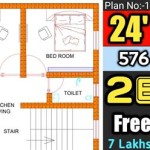Three-Story House Plans With Elevator: Design Considerations and Practical Applications
The integration of an elevator into a three-story house plan represents a significant investment in convenience, accessibility, and future-proofing. While traditionally associated with luxury or necessity for individuals with mobility limitations, the inclusion of an elevator is increasingly considered a desirable feature in modern homes, enhancing property value and overall lifestyle. Careful planning and design are crucial to ensure seamless integration with the architectural style of the house while meeting building codes and accessibility standards.
This article examines the key factors to consider when incorporating an elevator into a three-story house plan. It will explore the different types of elevators suitable for residential use, the spatial requirements and structural considerations involved, and the aesthetic integration of the elevator within the overall design.
Types of Residential Elevators
Choosing the right type of elevator is paramount. Several options are available, each with its own advantages and disadvantages regarding cost, space requirements, installation complexity, and maintenance needs. Understanding these differences is critical to selecting an elevator that best suits the homeowner's budget, lifestyle, and the specific architectural context of the house.
Hydraulic Elevators: These elevators operate using a hydraulic piston that raises and lowers the elevator car. They are generally more cost-effective than traction elevators and require less overhead space. However, they typically require a machine room to house the hydraulic pump and controller, which adds to the overall space requirement. Furthermore, hydraulic elevators may have slower speeds compared to other types and can be more susceptible to environmental concerns due to potential hydraulic fluid leaks. The piston travels within a bored hole into the ground, which can present environmental permitting hurdles depending on the location.
Traction Elevators: Traction elevators utilize ropes and a counterweight system to move the elevator car. They offer smoother rides and faster speeds than hydraulic elevators. They also require less space for the machine room, which can often be located above the hoistway (the shaft that houses the elevator). However, traction elevators are generally more expensive to install and maintain than hydraulic elevators. There are geared and gearless traction elevators. Gearless traction elevators are typically used in taller buildings and operate at higher speeds, making them less common in three-story residential applications.
Pneumatic Elevators (Vacuum Elevators): These elevators operate using air pressure. The elevator car is enclosed within a clear polycarbonate cylinder, creating a visually striking design element. Pneumatic elevators are relatively easy to install and require minimal structural modifications. They do not need a pit or machine room, making them a space-saving option. However, they tend to be more expensive than hydraulic elevators and are typically limited to smaller car sizes and lower weight capacities. They also tend to be the slowest type of elevator.
MRL (Machine-Room-Less) Elevators: As the name suggests, MRL elevators do not require a dedicated machine room. The elevator components are housed within the hoistway, which saves space and simplifies installation. They are typically traction elevators and offer a good balance of performance, efficiency, and cost-effectiveness. MRL elevators are becoming increasingly popular for residential applications due to their space-saving design and reduced installation costs.
Spatial and Structural Considerations
Integrating an elevator into a three-story house plan requires careful consideration of spatial and structural requirements. The elevator shaft, or hoistway, must be properly sized to accommodate the elevator car, its operating mechanisms, and any necessary safety features. The location of the elevator within the house should be strategically chosen to minimize disruption to existing layouts and maximize accessibility for all residents.
Hoistway Size and Location: The dimensions of the hoistway will depend on the size of the elevator car and the type of elevator chosen. Building codes typically specify minimum hoistway dimensions to ensure safe operation and accessibility. The location of the hoistway should ideally be central to the house, providing easy access from all floors. Consider the proximity to bedrooms, living areas, and the kitchen to ensure optimal convenience. Integrating the elevator into an existing stairwell can be a space-saving solution, but it may require significant structural modifications.
Pit and Overhead Clearance: Most elevators require a pit at the bottom of the hoistway and overhead clearance at the top. The pit depth and overhead height will vary depending on the type of elevator and local building codes. The pit is required to accommodate the elevator's safety mechanisms and leveling devices. The overhead clearance provides space for the elevator car to fully extend without hitting the top of the hoistway. Pneumatic elevators are an exception, as they do not require a pit.
Structural Support: The weight of the elevator car and its passengers must be properly supported by the building's structure. The floor supporting the hoistway must be strong enough to bear the load, and the hoistway walls must be structurally sound. A structural engineer should be consulted to assess the existing structure and recommend any necessary reinforcements. This is particularly important when retrofitting an elevator into an existing house. Load-bearing capacity may be a critical factor in determining the feasibility of installing an elevator in a specific location.
Machine Room: As mentioned earlier, some elevators, such as hydraulic elevators, require a dedicated machine room to house the operating equipment. The machine room should be located close to the hoistway and should be properly ventilated to prevent overheating. The size of the machine room will depend on the type of equipment installed. MRL elevators eliminate the need for a dedicated machine room, which can be a significant advantage in terms of space savings.
Aesthetic Integration and Design Considerations
Beyond the technical aspects, the aesthetic integration of the elevator into the overall design of the house is crucial. The elevator should complement the architectural style of the home and should not appear as an afterthought. The finishes, materials, and lighting should be carefully selected to create a cohesive and visually appealing design.
Elevator Car Design: The interior of the elevator car should be designed to be both functional and aesthetically pleasing. Choose finishes and materials that complement the overall design of the house. Options include wood paneling, stainless steel, glass, and upholstered walls. Consider adding features such as mirrors, lighting, and handrails to enhance the comfort and safety of the elevator. The size and layout of the car should be designed to accommodate the needs of all users, including those with mobility limitations.
Hoistway Finishes: The exterior of the hoistway should be finished to match the surrounding walls and trim. This can be achieved through the use of paint, wallpaper, or paneling. Consider incorporating decorative elements such as moldings, wainscoting, or artwork to enhance the visual appeal of the hoistway. The goal is to seamlessly integrate the elevator into the overall design of the house, making it a natural extension of the existing architecture.
Door Styles and Hardware: The style of the elevator doors and the hardware should complement the overall design of the house. Options include swing doors, sliding doors, and telescopic doors. Choose hardware that is both functional and aesthetically pleasing, such as brushed nickel, polished brass, or oil-rubbed bronze. Consider adding features such as automatic door openers and closers for added convenience.
Lighting and Ventilation: Proper lighting and ventilation are essential for creating a comfortable and safe elevator environment. Install adequate lighting in both the elevator car and the hoistway. Consider using recessed lighting or decorative light fixtures to enhance the ambiance. Ensure that the hoistway is properly ventilated to prevent the build-up of stale air. This is particularly important in elevators that are used frequently.
Compliance with Building Codes: All elevator installations must comply with applicable building codes and accessibility standards. This includes requirements for hoistway construction, safety features, and accessibility features. Consult with a qualified elevator contractor and building inspector to ensure that the installation meets all applicable requirements. Failure to comply with building codes can result in costly delays and penalties.
Incorporating an elevator into a three-story house plan is a complex undertaking that requires careful planning and execution. By considering the different types of elevators available, the spatial and structural requirements involved, and the aesthetic integration of the elevator into the overall design, homeowners can create a functional, accessible, and visually appealing addition to their homes. Consulting with qualified professionals such as architects, structural engineers, and elevator contractors is essential to ensure a successful project.
Furthermore, ongoing maintenance is critical for the safe and reliable operation of the elevator. Regular inspections and servicing by a qualified technician are necessary to identify and address any potential problems before they become serious. A preventative maintenance plan can help to extend the life of the elevator and minimize the risk of breakdowns.

4 Bedroom Three Story Southern Coastal Home With A Loft Wet Bar And Elevator Floor Plan House Plans Beach Flooring

3 Bedroom Three Story Luxury Contemporary Mediterranean Home With Elevator And Balconies Floor Plan House Plans

7 Bedroom Luxury Mediterranean Home Floor Plan With Elevator And Courtyard

Coastal Retreat Three Story Beach House Floor Plan Stays Focused On The Waterfront

Elevator Equipped House Plans Sater Design Collection

Plan 666239raf 3 Story Modern House With Elevator And Front Garage 4237 Sq Ft In 2024 Floor Plans Mountain

House Plans With Residential Elevator Drummond

Home Plan Berkshire Bluff Sater Design Collection

V 580 39x56 Three Story House Plans 5300 Sq Ft Luxury Villa España Floor

Home Plans With Elevator

